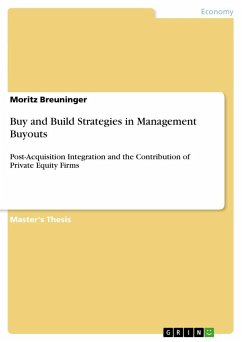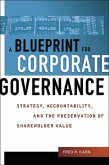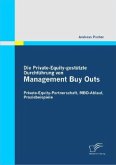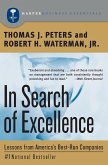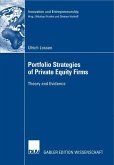Master's Thesis from the year 2013 in the subject Business economics - Business Management, Corporate Governance, grade: 7,5, Erasmus University Rotterdam (Strategic Management), language: English, abstract: Recent changes in the market for private equity have led investors to shift their attention away from market beta and towards generating alpha through the exploration of growth opportunities. PE firms increasingly use active ownership to implement these new growth plans. Buy and build strategies have emerged as a feasible and lucrative strategy of active ownership. The add-on acquisitions required when pursuing this strategy and the need to create value through synergistic effects necessitate post-acquisition integration efforts. Despite its relevance, researchers in the field of strategic management and finance have paid little attention to buy and build strategies. Moreover, they have yet to bridge the findings by scholars and practitioners on post-acquisition integration and active ownership. This paper seeks to fill this gap by answering the research question of how PE firms contribute to the integration process and how they handle task and affective conflicts and exercise management control with regard to the cooperation between the PE firm and the management of the portfolio company. Previous work has linked active ownership to capabilities and found that prior business experience is a strong predictor of active ownership, meaning a high level of contribution by the investment firm. This paper complements this work by analyzing active ownership of private equity firms in the context of post-acquisition integration in buy and build strategies and finds a direct link between capabilities and active ownership through four explanatory theory-building case studies. Birkinshaw et al. (2000)'s study on post-acquisition integration is used as a guiding concept in this paper. They distinguish between task integration, which is defined as the identification and realization of operational synergies, and human integration, which is defined as the creation of positive attitudes towards the integration and shared identity among employees. This paper creates a practical Framework for Integration Management on this notion and extends it by additional academic literature and relevant studies of consulting firms. A number of working propositions are derived from the literature and linked to the framework. Each proposition is then tested through within-case analysis and across-case comparison. Based on the evidence, three propositions are revised or extended whereas six propositions are supported. [...]
Hinweis: Dieser Artikel kann nur an eine deutsche Lieferadresse ausgeliefert werden.
Hinweis: Dieser Artikel kann nur an eine deutsche Lieferadresse ausgeliefert werden.

